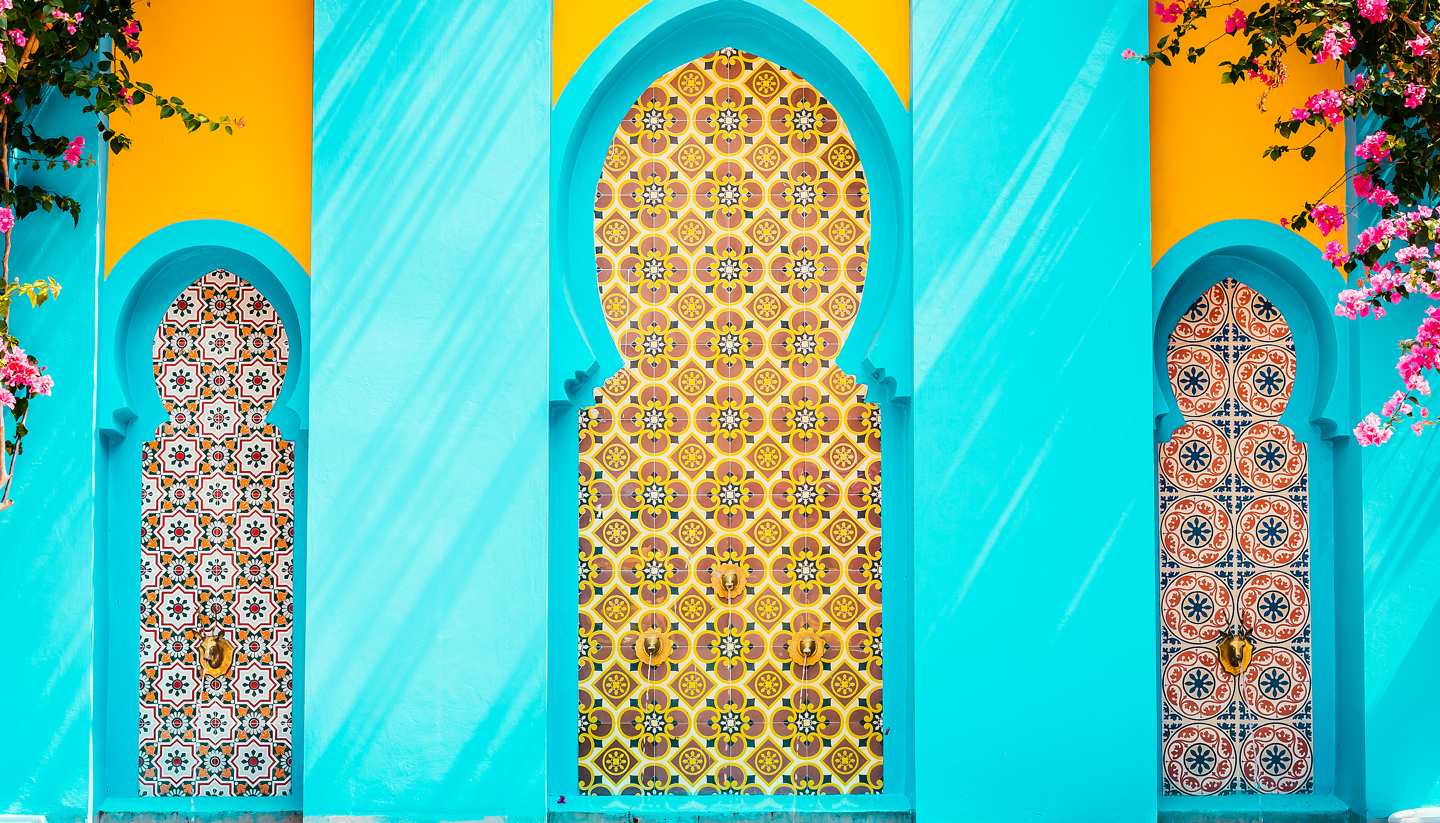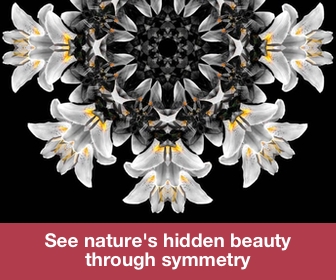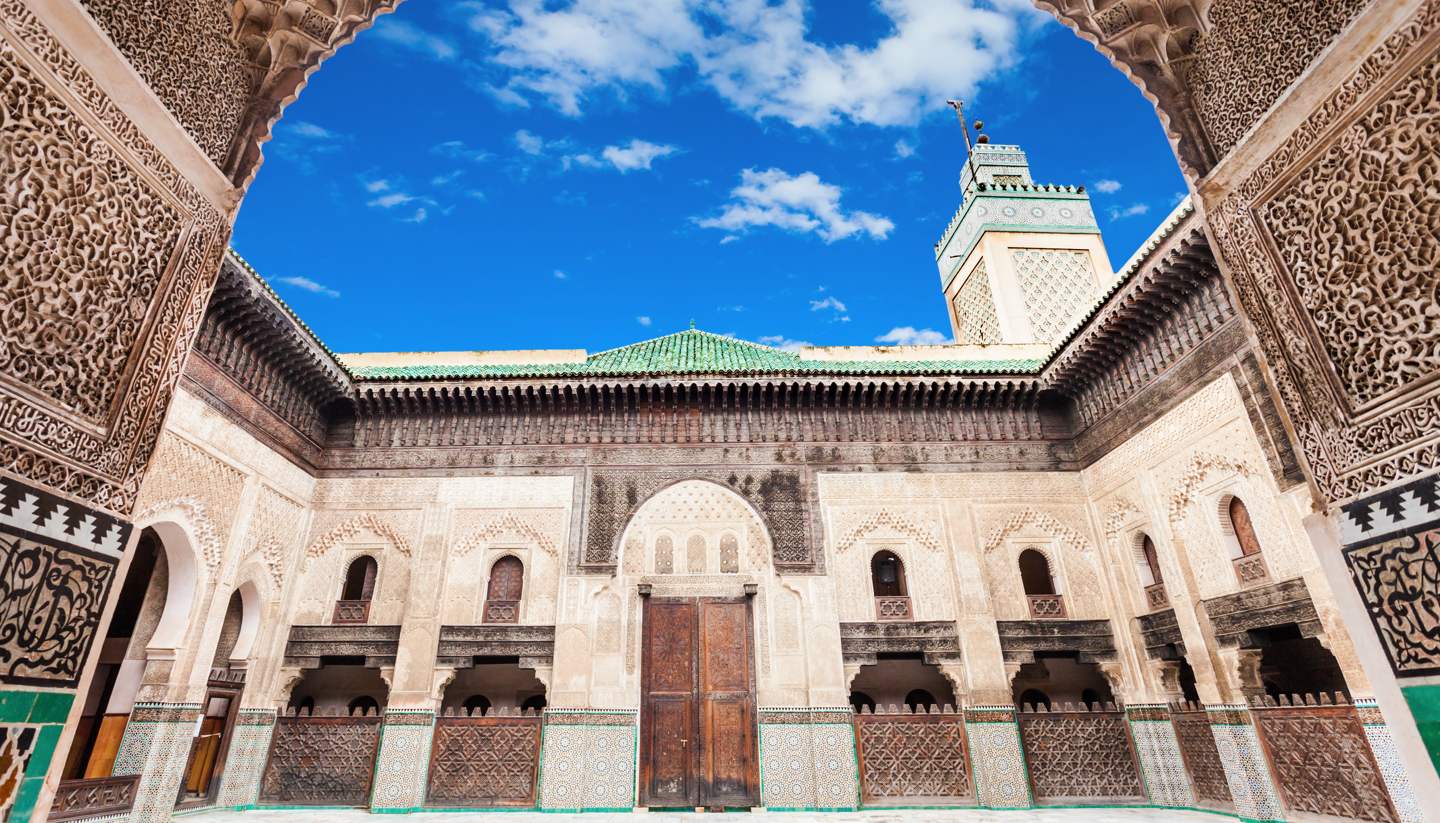Things to see and do in Morocco
Attractions in Morocco
Casablanca
The economic hub of Morocco, Casablanca is a bustling metropolis filled to the brim with modern high-rises amid colonial art-deco buildings. Everywhere you turn, you can't miss the minaret of the stunning Hassan II Mosque. It is worth joining a tour to see the mosque interior, taking in the frescoes with geometrical motifs, intricate stuccoes, and arabesques with drawn or calligraphic motifs.
Chefchaouen
With pastel-blue painted houses scattering down a slope of the Rif Mountains, Chefchaouen is a pretty town. Chaouen, as it is otherwise known, is also a paradise for walkers keen to explore Morocco's most northerly mountain chains. Some tourists also come to seek out cannabis plantations in this mountainous region.
Fes (Fez)
Often called Morocco's cultural capital, Fes (or Fez) was once an imperial city of Morocco in the 13th century. Today, it is known for its vibrant Fes El Bali medina and souks, including the Chouara Tannery (one of the three in Fes with hundreds of containers filled with dye or white liquids).
Marrakech (Marrakesh)
Marrakech, also spelt Marrakesh, is known for its colourful souks which cover many winding alleyways in the northside of Jemaa El-Fna Square. Other popular activities include taking a breather in Jardin Majorelle, visiting the atmospheric El Badii Palace and getting an intimate glance into the lives of 19th-century royalty at Bahia Palace.
Medinas
A medina is an old walled town crisscrossed with narrow alleyways. It usually has a few mosques (known as jemaas), palaces, and a main square where commercial activities occur. The medinas of Essaouira, Fes, Marrakech and Tétouan are all on UNESCO's World Heritage list and well worth a visit.
National Parks and biospheres
Morocco has 11 national parks and several biospheres and reserves. Toubkal National Park, home to the highest peak in the Atlas Mountains, is most popular for trekking, while Souss-Massa National Park, near Agadir, offers beaches, cliffs, dunes, and Argania forests. Birdwatchers, on the other hand, seek out Oued-Massa Nature Reserve thanks to its rich bird fauna, both native and migrating.
Rabat
Rabat is Morocco's capital city and has a beautiful blend of historic and modern buildings. The old town, surrounded by defensive walls, has a busy souk and a small mellah or Jewish quarter. Beyond it, wide boulevards are lined with embassies and government buildings, interspersed by attractive parks.
The Ksar of Aït Ben haddou
Chances are, you've seen the ksar (buildings made of mud bricks and fortified with high walls) of Aït Ben Haddou in some Hollywood blockbusters before, as they were featured in hits like Gladiator, The Mummy and Game of Thrones.
Todgha Gorge
About 390km (242mi) east of Marrakesh lies the Todgha Gorge, a magnet for photographers, hikers and rock climbers. The canyon floor, which is either dry or has a trickling stream at times, offers travellers a chance to walk and look up at the imposing stone walls. Beware that sunlight only reaches the canyon floor for a few hours each day; hence the temperatures can be chilly.



